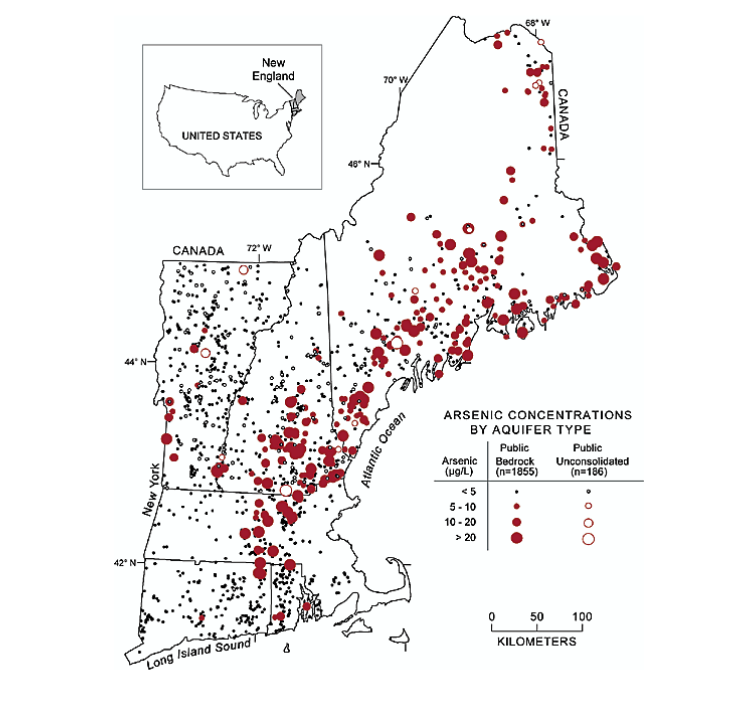
Photo by Luann Hunt/Unsplash.

Recent research from UNH helped New Hampshire lawmakers deliver safer drinking water to Granite State residents. HB 261, signed by Gov. Chris Sununu on July 12, 2019, limits the amount of arsenic — linked to cancer and cognitive impairment — in public drinking water to half the federal limit, or 5 parts per billion (ppb).
In October of 2018, New Hampshire’s Department of Environmental Services (NHDES) tapped an interdisciplinary team of UNH researchers to explore the economic benefits of lowering allowable arsenic content in New Hampshire’s municipal water systems.
“Monitoring and filtering for arsenic has the potential for being expensive, and municipal water associations work hard to keep costs down,” says Bob Woodward, the Forrest D. McKerley Professor of Health Economics Emeritus at UNH. “So it is important to know how much people are willing to pay each month to have access to filtered water.”
“Armed with the facts we can now work to truly and positively impact the health of our citizens.”
Woodward and collaborators from Paul College, associate professor of economics Robert Mohr, economics lecturer Scott Lemos, and professor of resource economics John Halstead, of COLSA, prepared a report for NHDES that showed New Hampshire residents on municipal water systems would be willing to pay $35 each month to avoid the negative health effects of high arsenic levels in drinking water.
Inorganic arsenic occurs naturally and abundantly in groundwater in New Hampshire; it’s a carcinogen with known links to lung, bladder and skin cancer; cognitive and neurodevelopmental issues in children; and cardiovascular disease. NHDES found that halving the arsenic levels to 5 parts per billion, something no state other than New Jersey has done, was technically feasible but would come with a cost.
The agency initially asked the UNH team to calculate the medical savings associated with avoiding cancer linked to arsenic. “We said, ‘is that how you really want to ask the question?’” says Woodward. The team of economists instead pursued the larger question, one particularly relevant to municipal water authorities: What price increase would municipal water consumers be willing to pay?
The researchers surveyed a representative sample of 500 New Hampshire municipal water customers (Lemos was “the real workhorse on the survey,” Woodward says). They found survey respondents were willing to pay $426 per year for a reduction in the risk of lung or bladder cancer, results that NHDES used to inform discussion of HB 261.
“I think the academic rigor that the UNH economists brought to NHDES’s review of the arsenic standard helped to convince the legislature and the governor of the very real economic value of bringing the standard down to 5 parts per billion from the current level of 10 ppb,” says Paul Susca, supervisor of the planning unit in the NHDES Drinking Water and Groundwater Bureau responsible for conducting the review of arsenic standards. “The UNH work showed that New Hampshire residents are willing to pay to reduce their health risk from arsenic in drinking water, and it also highlighted the potential reduction in lifetime earnings associated with a possible reduction in childhood intelligence as a result of exposure to 5 to 10 ppb arsenic in drinking water.”
NHDES is grateful to UNH for providing “sound science” on arsenic, says NHDES water division director Thomas E. O’Donovan. “Armed with the facts we were able to change the maximum contaminant level and can now work to truly and positively impact the health of our citizens.”
-
Written By:
Beth Potier | UNH Marketing | beth.potier@unh.edu | 2-1566



















































